Russia’s first Moon mission in 47 years failed when its Luna-25 spacecraft spun out of control and crashed into the Moon after a problem preparing for pre-landing orbit, underscoring the post-Soviet decline of a once mighty space programme. Russia’s state space corporation, Roskosmos, said it had lost contact with the craft at 11:57 GMT on Saturday after a problem as the craft was shunted into pre-landing orbit. A soft landing had been planned for Monday. The failure underscored the decline of Russia’s space power since the glory days of Cold War competition when Moscow was the first to launch a satellite to orbit the Earth - Sputnik 1, in 1957 - and Soviet cosmonaut Yuri Gagarin became the first man to travel into space in 1961. Russia had not attempted a Moon mission since Luna-24 in 1976 when Communist leader Leonid Brezhnev ruled the Kremlin. The Vladimir Putin-led country has been racing against India, whose Chandrayaan-3 spacecraft is scheduled to land on the Moon’s south pole this week, and more broadly against China and the United States which both have advanced lunar ambitions. Also read: Vikram lander breaks away: What next in Chandrayaan-3 mission? Half of the lunar missions in 6 decades failed Though Moon missions are fiendishly difficult, many countries’ attempts have failed in the past. From 1958 to 1979, only the US and the USSR (now Russia) launched Moon missions. In these 21 years, the two countries launched 90 missions. There was a lull in the decade that followed with no lunar missions from 1980 to 1989. Japan, the European Union, China, India and Israel have been late entrants.
According to NASA, only half of the lunar missions involving landing on the Moon’s surface have succeeded in the last six decades. There have been a total of 109 lunar missions from 1958, out of which 61 were successful, according to the US space agency’s “Moon Fact Sheet.” As many as 46 missions involved landing on the lunar surface, including landing of the rover and sample return. Out of these 21 were successful, while two were partially successful. Let’s take a look at the failed missions. The US Air Force Pioneer 0 mission (1958) The U.S. Air Force created a series of pathfinder flights to determine whether lunar exploration was feasible while the space race was in full effect. The Pioneer missions were the “first attempt to send a spacecraft anywhere beyond Earth orbit,” as stated by NASA. Initially known as Able 1, the spacecraft’s booster rocket exploded 73.6 seconds after liftoff on 17 August 1958. [caption id=“attachment_13020122” align=“alignnone” width=“640”]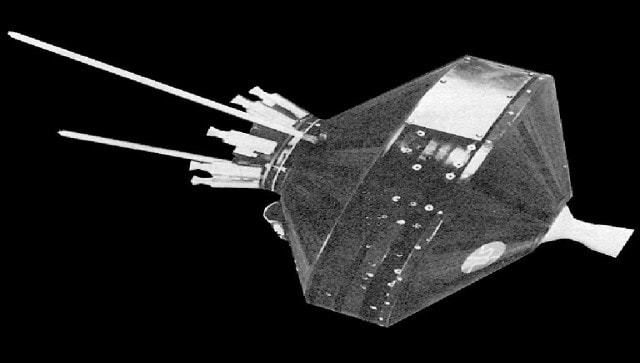 The US Air Force Pioneer 0 mission (1958). Image Courtesy: NASA[/caption] The following three Pioneer launches also failed, and it wasn’t until the launch of Pioneer 4 on 3 March 1959, that any success was deemed to have been possible. Also read: What happens if someone dies on the Moon, Mars or anywhere in space?
The Soviet Union’s Luna 1958A, 1958B, 1958C The Soviet Union was as keen as the United States to land on the Moon. But these early exploratory efforts also produced a number of failures. The initial of these missions, Luna E-1 No. 1, aka Luna 1958A, aimed at purposefully crashing a spacecraft onto the lunar surface, but the 156 kg Ye-1 probe never made it into orbit. According to NASA, the launch vehicle’s structural failure on 23 September 1958, “occurred due to vibration caused by pressure oscillations in the BVGD boosters and exploded 92 seconds after launch.” [caption id=“attachment_13020952” align=“alignnone” width=“640”]
The US Air Force Pioneer 0 mission (1958). Image Courtesy: NASA[/caption] The following three Pioneer launches also failed, and it wasn’t until the launch of Pioneer 4 on 3 March 1959, that any success was deemed to have been possible. Also read: What happens if someone dies on the Moon, Mars or anywhere in space?
The Soviet Union’s Luna 1958A, 1958B, 1958C The Soviet Union was as keen as the United States to land on the Moon. But these early exploratory efforts also produced a number of failures. The initial of these missions, Luna E-1 No. 1, aka Luna 1958A, aimed at purposefully crashing a spacecraft onto the lunar surface, but the 156 kg Ye-1 probe never made it into orbit. According to NASA, the launch vehicle’s structural failure on 23 September 1958, “occurred due to vibration caused by pressure oscillations in the BVGD boosters and exploded 92 seconds after launch.” [caption id=“attachment_13020952” align=“alignnone” width=“640”]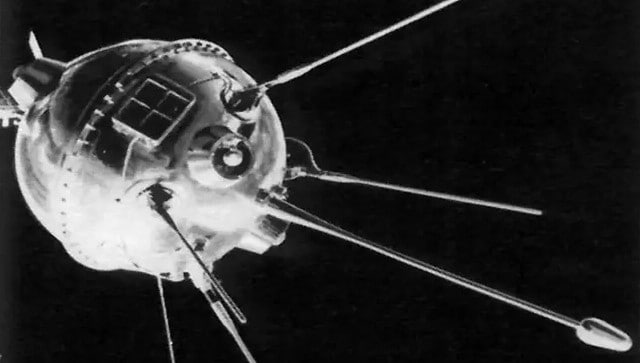 The Soviet Union’s Luna series. Image Courtesy: NASA[/caption] The second mission – Luna 1958B – was launched on 12 October 1958, a few hours after the US Pioneer 1 mission, which again was an unsuccessful attempt by the US. The third Luna 1958C was the third Soviet attempt to reach the Moon, which “lost thrust 245 seconds after launch due to failure of a a hydrogen peroxide pump gearbox which was compromised by the failure of a hermetic seal and loss of lubricant feed. The rocket lost stability and the engine was shut down by the AVD emergency system.” NASA’s first 6 Ranger missions (1961-1964) In contrast to the early Pioneer missions were just attempts to reach the Moon’s vicinity, NASA’s 1960s Ranger missions, which were intended to explore the Moon with probes before purposefully crashing them onto the lunar surface. Ranger missions 7 through 9 were successful, while the previous six missions could not be regarded to have been successful, according to NASA. [caption id=“attachment_13020972” align=“alignnone” width=“640”]
The Soviet Union’s Luna series. Image Courtesy: NASA[/caption] The second mission – Luna 1958B – was launched on 12 October 1958, a few hours after the US Pioneer 1 mission, which again was an unsuccessful attempt by the US. The third Luna 1958C was the third Soviet attempt to reach the Moon, which “lost thrust 245 seconds after launch due to failure of a a hydrogen peroxide pump gearbox which was compromised by the failure of a hermetic seal and loss of lubricant feed. The rocket lost stability and the engine was shut down by the AVD emergency system.” NASA’s first 6 Ranger missions (1961-1964) In contrast to the early Pioneer missions were just attempts to reach the Moon’s vicinity, NASA’s 1960s Ranger missions, which were intended to explore the Moon with probes before purposefully crashing them onto the lunar surface. Ranger missions 7 through 9 were successful, while the previous six missions could not be regarded to have been successful, according to NASA. [caption id=“attachment_13020972” align=“alignnone” width=“640”] US’ the Ranger spacecraft. Image Courtesy: NASA[/caption] NASA’s Surveyor of the Moon 2 (1966) and 4 (1967) Despite being the first American spacecraft to successfully touch down on the Moon, two of NASA’s seven Surveyor missions were a complete failure. When Surveyor 2’s engine failed to start in September 1966, it crashed on the Moon, and when Surveyor 4’s radio communications failed in July 1967, it crashed on Earth. [caption id=“attachment_13020982” align=“alignnone” width=“640”]
US’ the Ranger spacecraft. Image Courtesy: NASA[/caption] NASA’s Surveyor of the Moon 2 (1966) and 4 (1967) Despite being the first American spacecraft to successfully touch down on the Moon, two of NASA’s seven Surveyor missions were a complete failure. When Surveyor 2’s engine failed to start in September 1966, it crashed on the Moon, and when Surveyor 4’s radio communications failed in July 1967, it crashed on Earth. [caption id=“attachment_13020982” align=“alignnone” width=“640”]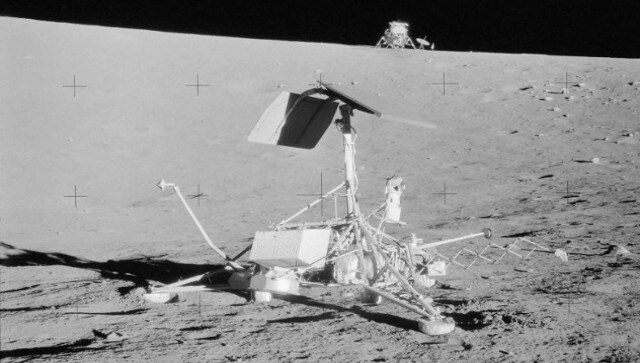 NASA’s Surveyor of the Moon. Image Courtesy: NASA[/caption] According to NASA, the main objectives of the Surveyors were to obtain close-up images of the lunar surface and to determine if the terrain was safe for manned landings. Also read: Why Chandrayaan-3 stands out from all other moon missions
The Soviet Zond 6 mission (1968) On 10 November 1968, the Soviet Union successfully launched the Zond 6 spacecraft, carrying out the mission’s objectives of performing a lunar flyby and returning to Earth. The spacecraft, which carried scientific probes including cosmic-ray and micrometeoroid detectors, photography equipment, and a biological payload, was a precursor to manned spaceflight, as per NASA. [caption id=“attachment_13021002” align=“alignnone” width=“640”]
NASA’s Surveyor of the Moon. Image Courtesy: NASA[/caption] According to NASA, the main objectives of the Surveyors were to obtain close-up images of the lunar surface and to determine if the terrain was safe for manned landings. Also read: Why Chandrayaan-3 stands out from all other moon missions
The Soviet Zond 6 mission (1968) On 10 November 1968, the Soviet Union successfully launched the Zond 6 spacecraft, carrying out the mission’s objectives of performing a lunar flyby and returning to Earth. The spacecraft, which carried scientific probes including cosmic-ray and micrometeoroid detectors, photography equipment, and a biological payload, was a precursor to manned spaceflight, as per NASA. [caption id=“attachment_13021002” align=“alignnone” width=“640”]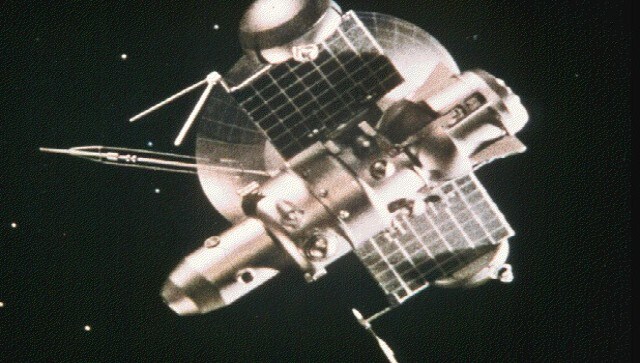 The Zond Program by the Soviet Union. Image Courtesy: The Lunar and Planetary Institute[/caption] After completing a full orbit around the Moon, the mission failed as Zond 6 crashed on Earth due to a parachute failure. The Soviet Luna 15 (1969) Not all Luna missions were successful. Luna 15, a mission that aimed to land on the Moon and return samples, was one significant failure. It took place at the same time as the Apollo 11 Moon landing mission, and was thought to be a last ditch effort by the Soviet Union to return a sample from the Moon before the United States. [caption id=“attachment_13021032” align=“alignnone” width=“640”]
The Zond Program by the Soviet Union. Image Courtesy: The Lunar and Planetary Institute[/caption] After completing a full orbit around the Moon, the mission failed as Zond 6 crashed on Earth due to a parachute failure. The Soviet Luna 15 (1969) Not all Luna missions were successful. Luna 15, a mission that aimed to land on the Moon and return samples, was one significant failure. It took place at the same time as the Apollo 11 Moon landing mission, and was thought to be a last ditch effort by the Soviet Union to return a sample from the Moon before the United States. [caption id=“attachment_13021032” align=“alignnone” width=“640”]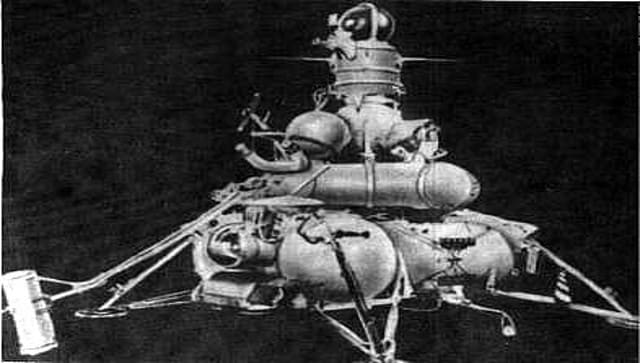 The Luna model. Image Courtesy: NASA[/caption] On 21 July 1969, the day NASA astronaut Neil Armstrong became the first person to set foot on the Moon, the probe suddenly crashed into the lunar surface due to “technical problems.” The 12,500-pound probe fell around 870 kilometre from Tranquilly Base in Mare Crisium, so the Moonwalkers were never in any danger. Apollo 13 (1970) Launched on 11 April 1970, Apollo 13, US spaceflight was a successful failure, just like Zond 6 was. After a service module oxygen tank ruptured two days into the mission, the third Apollo lunar landing attempt had to be cancelled. Shortly after, NASA astronaut Jim Lovell is credited with saying, “Houston, we’ve had a problem here,” as the crew of three floated some 200,000 miles (322,000 km) from Earth. [caption id=“attachment_13021052” align=“alignnone” width=“640”]
The Luna model. Image Courtesy: NASA[/caption] On 21 July 1969, the day NASA astronaut Neil Armstrong became the first person to set foot on the Moon, the probe suddenly crashed into the lunar surface due to “technical problems.” The 12,500-pound probe fell around 870 kilometre from Tranquilly Base in Mare Crisium, so the Moonwalkers were never in any danger. Apollo 13 (1970) Launched on 11 April 1970, Apollo 13, US spaceflight was a successful failure, just like Zond 6 was. After a service module oxygen tank ruptured two days into the mission, the third Apollo lunar landing attempt had to be cancelled. Shortly after, NASA astronaut Jim Lovell is credited with saying, “Houston, we’ve had a problem here,” as the crew of three floated some 200,000 miles (322,000 km) from Earth. [caption id=“attachment_13021052” align=“alignnone” width=“640”]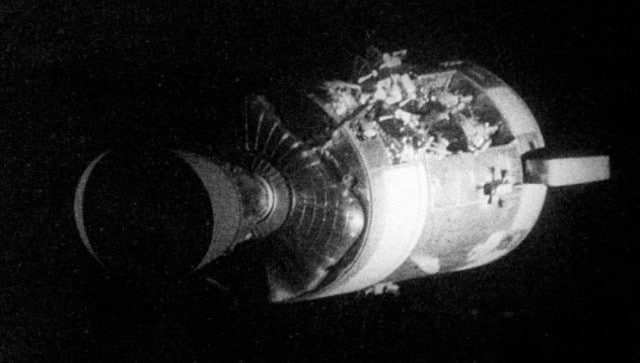 Apollo 13. Image Courtesy: britannica.com[/caption] The crew was compelled to move from the Command Module to the Lunar Module because oxygen was running low. They collaborated closely with NASA mission control, devising new processes and survival strategies. On 17 April 1970, Lovell, Jack Swigert, and Fred Haise returned safely to Earth. China’s Longjiang-1 (2018) According to Business Insider, two microsatellites, Longjiang-1 and Longjiang-2, were launched in May 2018 as part of China’s Chang’e 4 mission to the Moon with the aim of performing ultra-long-wave astronomy studies in lunar orbit. While Longjiang-2 made it to its target, Longjiang-1 encountered issues that prevented it from departing Earth orbit. Israel’s Beresheet (2019) Along with the United States, the Soviet Union, and China, Israel made its first attempt to become the fourth nation to successfully land a probe on the Moon in 2019. Unfortunately, that never happened since on 11 April 2019, due to technical problems, the Beresheet probe crashed while attempting to land. [caption id=“attachment_13021162” align=“alignnone” width=“640”]
Apollo 13. Image Courtesy: britannica.com[/caption] The crew was compelled to move from the Command Module to the Lunar Module because oxygen was running low. They collaborated closely with NASA mission control, devising new processes and survival strategies. On 17 April 1970, Lovell, Jack Swigert, and Fred Haise returned safely to Earth. China’s Longjiang-1 (2018) According to Business Insider, two microsatellites, Longjiang-1 and Longjiang-2, were launched in May 2018 as part of China’s Chang’e 4 mission to the Moon with the aim of performing ultra-long-wave astronomy studies in lunar orbit. While Longjiang-2 made it to its target, Longjiang-1 encountered issues that prevented it from departing Earth orbit. Israel’s Beresheet (2019) Along with the United States, the Soviet Union, and China, Israel made its first attempt to become the fourth nation to successfully land a probe on the Moon in 2019. Unfortunately, that never happened since on 11 April 2019, due to technical problems, the Beresheet probe crashed while attempting to land. [caption id=“attachment_13021162” align=“alignnone” width=“640”] Israel’s first lunar mission Beresheet. Image Courtesy: SpaceIL[/caption] Also read: Chandrayaan-3 vs Russia’s Luna-25: Why Moon’s south pole is so fascinating
India’s Chandrayaan 2/Vikram lander (2019) In a repeat of the Beresheet blunder, India’s Vikram lander was unable to touch down on the Moon in September 2019. The probe reached the surface at a speed of up to 110 miles per hour (180 kilometres per hour) since it did not slow down throughout its descent. Its dispersed remnants were discovered three months later. [caption id=“attachment_13021172” align=“alignnone” width=“640”]
Israel’s first lunar mission Beresheet. Image Courtesy: SpaceIL[/caption] Also read: Chandrayaan-3 vs Russia’s Luna-25: Why Moon’s south pole is so fascinating
India’s Chandrayaan 2/Vikram lander (2019) In a repeat of the Beresheet blunder, India’s Vikram lander was unable to touch down on the Moon in September 2019. The probe reached the surface at a speed of up to 110 miles per hour (180 kilometres per hour) since it did not slow down throughout its descent. Its dispersed remnants were discovered three months later. [caption id=“attachment_13021172” align=“alignnone” width=“640”]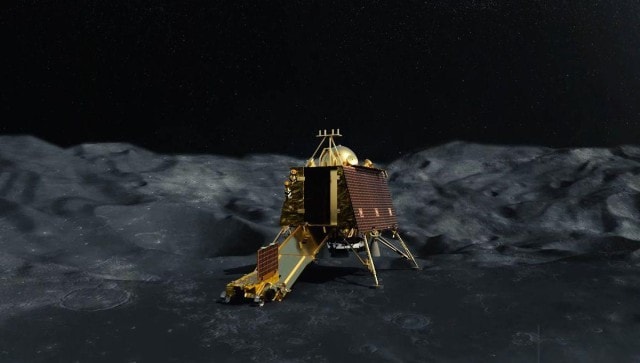 India’s Chandrayaan-2. Image Courtesy: ISRO/YouTube[/caption] Japan’s OMOTENASHI (2022) OMOTENASHI (Outstanding MOon Exploration Technologies), created by the Japan Aerospace Exploration Agency (JAXA), was intended to use solid rocket motors to try a semi-hard lunar landing, but the space agency was unable to get in touch with the probe once it was launched. [caption id=“attachment_13021182” align=“alignnone” width=“640”]
India’s Chandrayaan-2. Image Courtesy: ISRO/YouTube[/caption] Japan’s OMOTENASHI (2022) OMOTENASHI (Outstanding MOon Exploration Technologies), created by the Japan Aerospace Exploration Agency (JAXA), was intended to use solid rocket motors to try a semi-hard lunar landing, but the space agency was unable to get in touch with the probe once it was launched. [caption id=“attachment_13021182” align=“alignnone” width=“640”]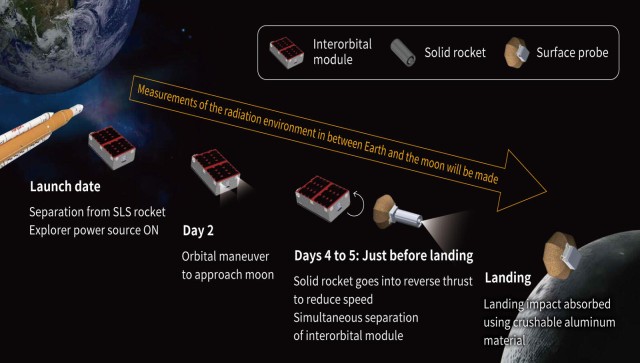 OMOTENASHI’s lunar landing sequence. Image Courtesy: JAXA[/caption] Lunar Flashlight (2022) Shortly after its launch in December 2022, issues with NASA’s Lunar Flashlight surfaced. The water-seeking spacecraft was unable to enter its intended halo orbit around the Moon due to clogged fuel lines, which caused thruster issues. NASA and Georgia Tech engineers developed a strategy in which Lunar Flashlight’s remaining propulsion capacity would launch the probe into a high Earth orbit from which it could survey the Moon’s southern pole region for signs of water ice once per month, rather than the initially planned once per week. [caption id=“attachment_13021192” align=“alignnone” width=“640”]
OMOTENASHI’s lunar landing sequence. Image Courtesy: JAXA[/caption] Lunar Flashlight (2022) Shortly after its launch in December 2022, issues with NASA’s Lunar Flashlight surfaced. The water-seeking spacecraft was unable to enter its intended halo orbit around the Moon due to clogged fuel lines, which caused thruster issues. NASA and Georgia Tech engineers developed a strategy in which Lunar Flashlight’s remaining propulsion capacity would launch the probe into a high Earth orbit from which it could survey the Moon’s southern pole region for signs of water ice once per month, rather than the initially planned once per week. [caption id=“attachment_13021192” align=“alignnone” width=“640”]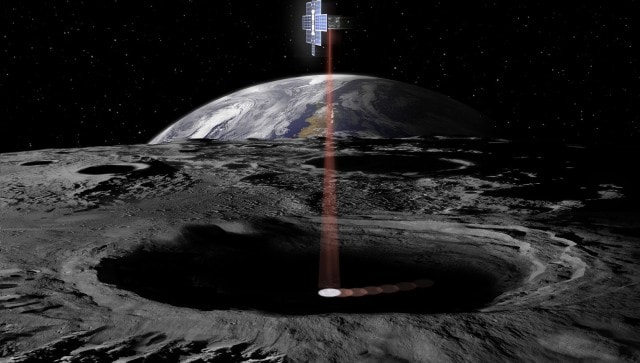 Lunar Flashlight mission. Image Courtesy: NASA[/caption] The Lunar Flashlight mission is considered a partial failure in this regard, according to Gizmodo. Japan’s ispace’s Hakuto-R M1 lander (2023) The Tokyo-based business ispace had aspirations to become the first for-profit company to set down a lander on the Moon. But this didn’t happen. The Hakuto-R M1 lunar lander crashed on 25 April 2023, after a four-month mission to the Moon. The UAE’s Rashid rover, a transformer-like robot, among other payload items, was lost as a result of the failed landing. [caption id=“attachment_13021222” align=“alignnone” width=“640”]
Lunar Flashlight mission. Image Courtesy: NASA[/caption] The Lunar Flashlight mission is considered a partial failure in this regard, according to Gizmodo. Japan’s ispace’s Hakuto-R M1 lander (2023) The Tokyo-based business ispace had aspirations to become the first for-profit company to set down a lander on the Moon. But this didn’t happen. The Hakuto-R M1 lunar lander crashed on 25 April 2023, after a four-month mission to the Moon. The UAE’s Rashid rover, a transformer-like robot, among other payload items, was lost as a result of the failed landing. [caption id=“attachment_13021222” align=“alignnone” width=“640”] Hakuto-R M1 lander. Image Courtesy: ispace[/caption] Engineers are still figuring out what went wrong just before the lander was reaching the surface The unsuccessful attempt indicates that a private company has not yet achieved a soft lunar landing. With inputs from agencies
Hakuto-R M1 lander. Image Courtesy: ispace[/caption] Engineers are still figuring out what went wrong just before the lander was reaching the surface The unsuccessful attempt indicates that a private company has not yet achieved a soft lunar landing. With inputs from agencies
)